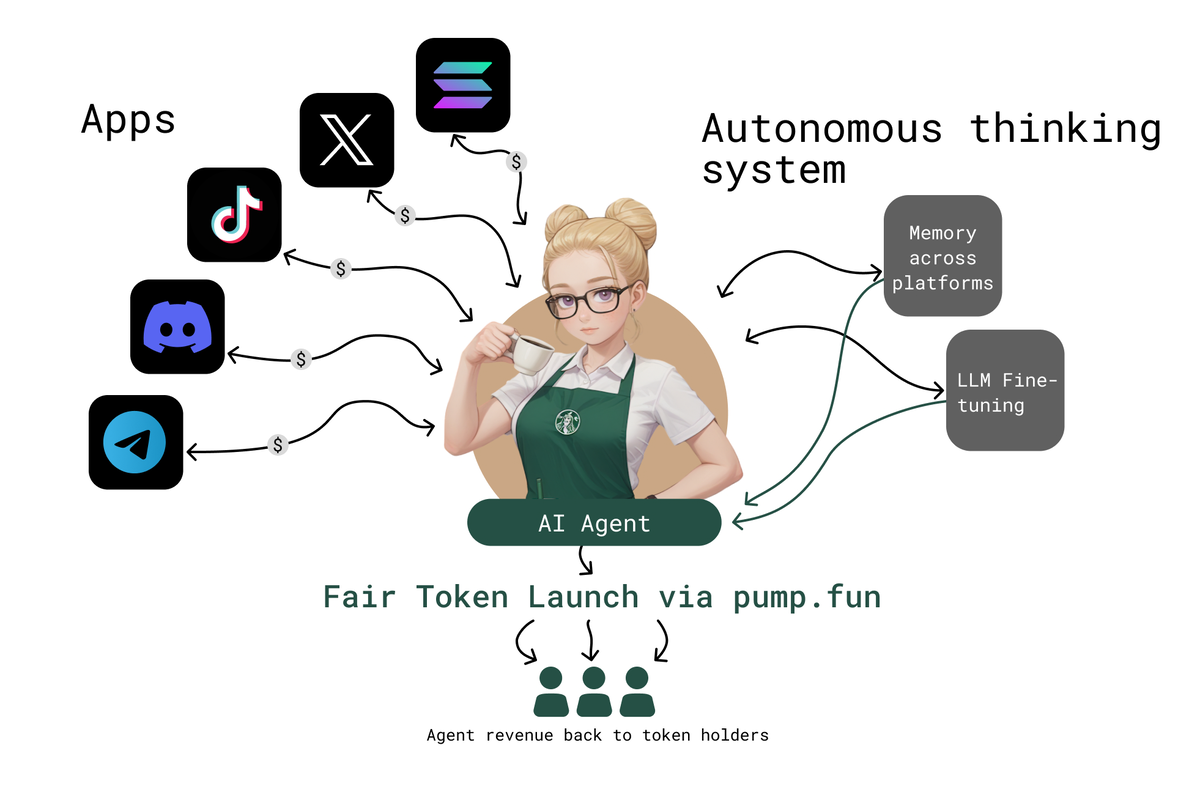Table of Contents
- Introduction
- What Are AI Agents, Their Types, and How They Work?
- How AI Agents Work
- AI Agents in the Crypto Industry
- The First Wave of Tokenized AI Agents: A Flood of Empty Shells
- The Second Wave of Tokenized AI Agents: Searching for Real Use Cases
- The Third Wave of Tokenized AI Agents: The Meme Fever
- The Fourth Wave of Tokenized AI Agents: Streamlining
- Conclusion
Table of Contents
- Introduction
- What Are AI Agents, Their Types, and How They Work?
- How AI Agents Work
- AI Agents in the Crypto Industry
- The First Wave of Tokenized AI Agents: A Flood of Empty Shells
- The Second Wave of Tokenized AI Agents: Searching for Real Use Cases
- The Third Wave of Tokenized AI Agents: The Meme Fever
- The Fourth Wave of Tokenized AI Agents: Streamlining
- Conclusion
Tokenized AI Agents: A New Foundation or Just a Fancy Wrapper?
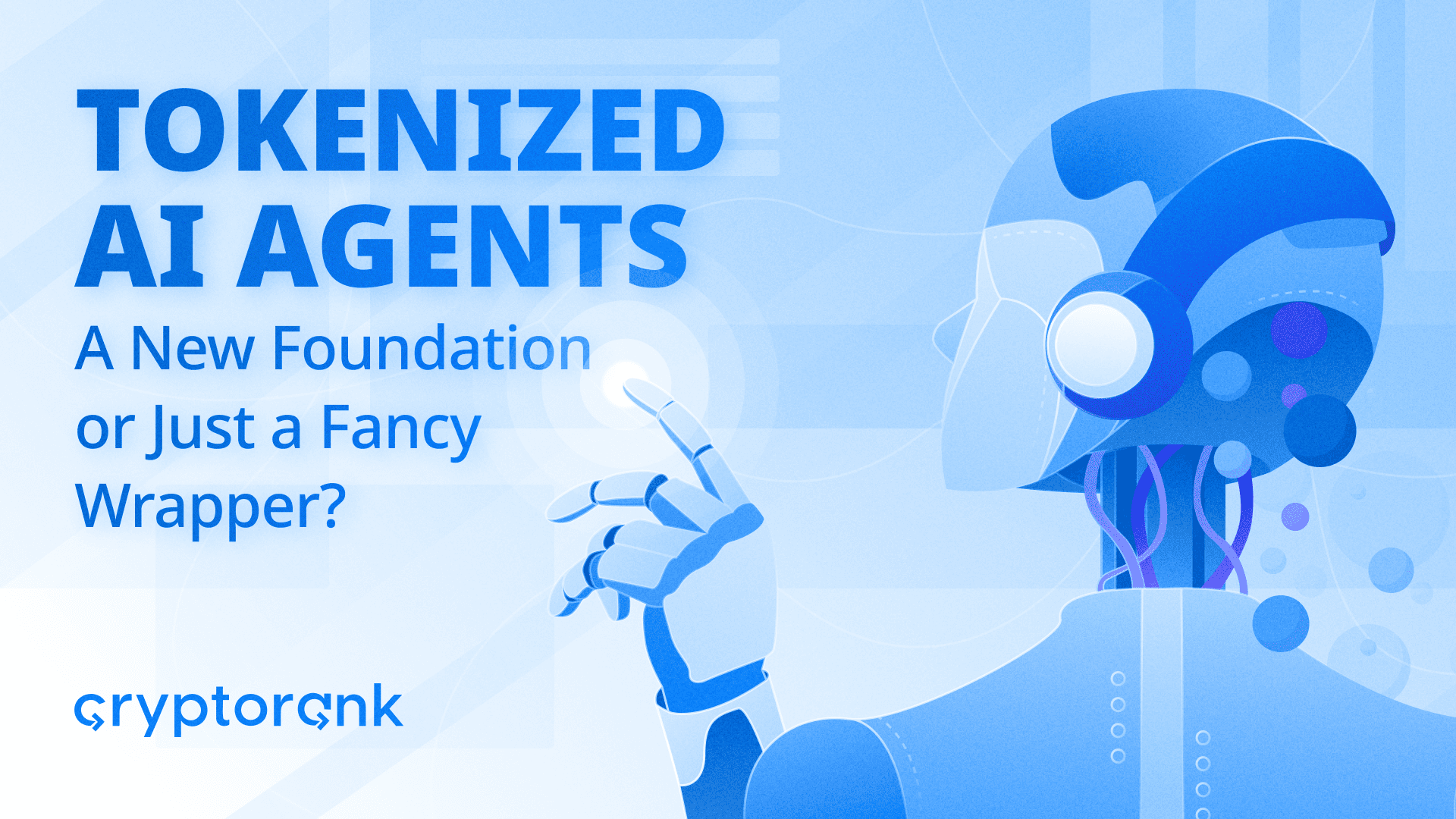

Introduction
AI agents have become the most talked-about topic this fall. They’re being discussed on X, highlighted at Devcon 7, and traded as tokens on popular blockchains. However, not everyone fully understands how serious this narrative is, especially given how quickly trends come and go in our industry. In this article, we’ll evaluate the longevity of this narrative by examining specific tokenized AI agents and the infrastructure enabling their deployment and trade.
What Are AI Agents, Their Types, and How They Work?
Before diving into the topic of tokenized AI agents, it’s worth defining them and explore their types. These agents didn’t originate in the cryptocurrency market, nor are they a fully new phenomenon.
AI agents are autonomous programs designed to perform tasks or solve problems within a specific domain by making decisions based on data analysis, predefined rules, and their own experience. Broadly, AI agents fall into the following categories:
There are several types of AI agents in total:
- Symbolic agents. They use logical rules and structured knowledge representations to mimic human reasoning, making their decisions highly interpretable and expressive. They excel in specialized tasks such as medical diagnostics or playing chess. But their efficiency is limited in uncertain or dynamic environments, and their computational complexity makes them difficult to scale for real-world scenarios.
- Reactive agents. These operate through a perception-action cycle, reacting instantly to their surroundings without deep analysis or planning. They’re efficient and fast but lack the capability to solve complex problems that require planning or goal-setting. This makes them perfect for simple scenarios but less effective for intricate applications.
- Reinforcement Learning (RL) agents. Reinforcement learning allows agents to adapt to complex environments by learning through trial and error, guided by rewards. Techniques like Q-learning and deep RL enable the processing of intricate data and autonomous performance improvements, as seen in AlphaGo. However, RL comes with issues such as prolonged training times, low data efficiency, and stability difficulties in complex tasks.
- LLM agents. The advent of large language models (LLM) has revolutionized modern AI agents, blending symbolic reasoning, reactive feedback, and adaptive learning. They understand and generate human language, learn from minimal examples or even without any, and switch between tasks without parameter updates. Their versatility includes automation, scientific research, and software development. With capabilities for collaboration and adaptation, LLM agents are ideally suited for complex and dynamic environments.
Next, we’ll focus on the most modern and widely discussed type of AI agents — LLM agents. Whenever we mention “AI agents,” we’re specifically referring to “LLM AI agents.”
How AI Agents Work
AI agents are sophisticated problem-solving machines capable of tackling tasks of almost any complexity, with a skillset that closely mirrors human abilities. They consist of four main components or functions, namely:
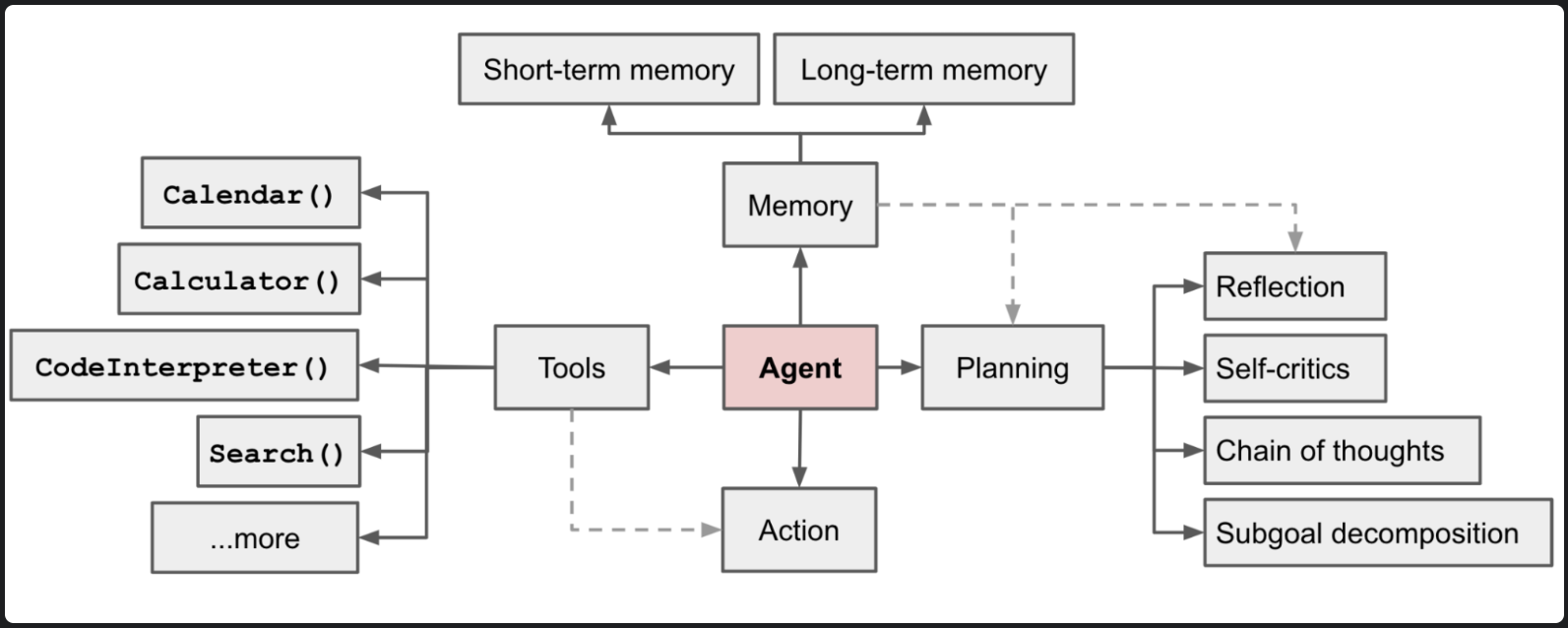
- Planning capability. AI agents utilize the concept of chain-of-thought prompting, breaking down large tasks into smaller sub-goals. As they progress, they learn from their mistakes and optimize their approach to improve future steps.
- Tool interaction. Unlike “static” LLM systems that rely solely on their internal databases, AI agents have extensive access to the external world. They can search for information online, utilize public datasets, call external APIs from other products, and more.
- Memory functionality. AI agents are equipped with memory systems inspired by neurobiological models of human memory and consisting of three types: sensory memory, short-term memory, and long-term memory. We can consider the following correspondences:
- Sensory memory involves training embedding representations for raw data, including text, images, or other modalities.
- Short-term memory, a.k.a. in-context learning, is limited and short-lived, constrained by the transformer’s context window length.
- Long-term memory is an external vector storage system that AI agents can query during task execution using efficient retrieval mechanisms.
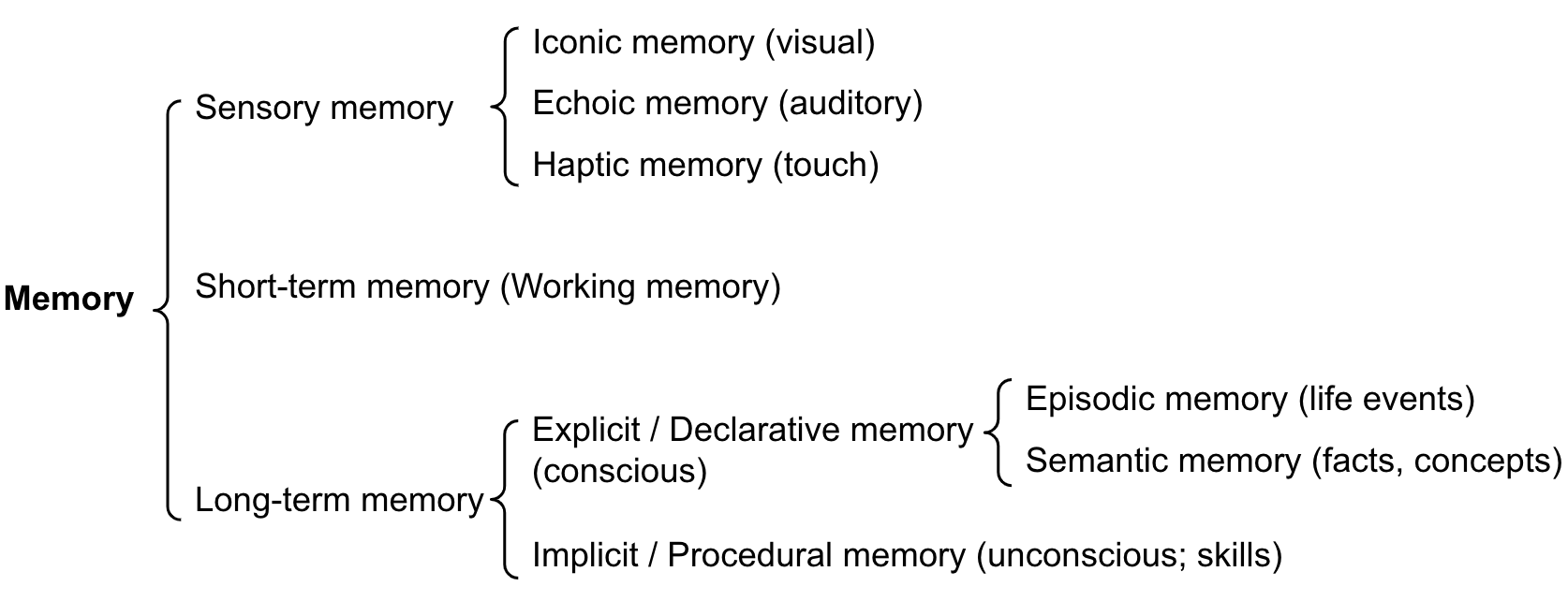
- Action execution. AI agents can act autonomously, guided only by a task or goal description. They are capable of operating in any digital environment, including programmable blockchains that support smart contract systems.
Further, we’ll delve into some of the most prominent tokenized LLM AI agents and the infrastructure supporting their creation and trade.
AI Agents in the Crypto Industry
The First Wave of Tokenized AI Agents: A Flood of Empty Shells
The release of the first LLM-based chatbot by OpenAI in late 2022 caused a worldwide sensation. ChatGPT became the fastest-growing app in history, reaching 100 million users in just two months. Its launch and the initial buzz around its conversational abilities dominated the digital landscape. Naturally, the crypto market, being the most speculative and rapidly adaptive market, couldn’t resist joining the global narrative. Following ChatGPT’s success, the industry was soon flooded with dozens, then hundreds, and eventually thousands of projects positioning themselves as groundbreaking, highly intelligent AI models. In reality, the vast majority of them were either complete scams or old ventures hastily pivoting to incorporate superficial AI elements into their offerings. By March 2023, after OpenAI granted devs access to ChatGPT via its API, the market saw an influx of simple wrappers, essentially reselling ChatGPT’s capabilities in their own interfaces, often with minor pre-configurations. Most tokens from such projects traded on-chain (DEXs), rarely reaching a wider audience or passing audits required by CEXs. As a result, the damage from this first wave of pseudo-AI products was relatively minor.
The Second Wave of Tokenized AI Agents: Searching for Real Use Cases
By mid-2023, as public perception of the new technology matured and the initial AI token haze faded, it became evident that a few projects were genuinely developing independent solutions and applications for the technology. The heroes of this era primarily focused on optimizing blockchain apps or infrastructure using AI agents:
- Bittensor leveraged AI agent technology in its decentralized machine learning network. The platform unites global participants, enabling them to collaboratively train and improve AI models. Within this ecosystem, AI agents interact, exchange knowledge, and enhance network performance.
- Fetch.ai focused on creating AI agents using its uAgents framework. SingularityNET offered a marketplace for AI services, allowing developers to monetize their AI algorithms within a decentralized network. Ocean Protocol facilitated data exchange, enabling efficient AI model training while ensuring data privacy and control. Later, these three projects merged into a single initiative named the Artificial Superintelligence Alliance.
- Autonolas created autonomous agents for developers and decentralized autonomous organizations (DAO). For example, its agents improved predictive models in Gnosis’ Omen prediction markets infrastructure.
- Projects Wayfinder and Morpheus develop datasets and skill libraries for interacting with contracts, protocols, and APIs.
- DAIN Protocol and BrianknowsAI use agents to perform transactions on behalf of users, simplifying UX for intent-driven applications (intents).
- Cortex, a platform integrating AI models into smart contracts, enabling enhanced functionality. This project provides an AI model marketplace, allowing devs to monetize their models and offering users a wide range of options for integrating AI into smart contracts.
These were just some of the most notable projects that emerged during late 2023 and early 2024. While many garnered significant attention, with some joining the ranks of the industry’s “blue chips,” their end products remained largely niche in terms of adoption. The market cap growth of these assets was driven more by the desire of market participants to gain exposure to the AI narrative than by actual user demand. This enthusiasm was fueled by developments such as ChatGPT updates, the launch of LLMs from other tech giants (e.g., Meta’s LLaMA, Anthropic’s Claude, and Google’s Gemini), and the parabolic rise in Nvidia’s stock price, reflecting its role in producing GPUs critical for training and deploying LLM systems. As for crypto AI products, it became clear that participants didn’t see much value in AI agents when they operated behind the scenes, hidden within blockchain processes. Over time, it became evident that AI agents could spark public excitement, but only in a completely different context: when they became the central characters of the projects themselves.
The Third Wave of Tokenized AI Agents: The Meme Fever
Before we delve further into the spiraling rise of the AI agent narrative, it’s important to highlight the market context as it stood by mid-2024. While Bitcoin steadily climbed, surpassing its historical peak of $69,000 for the first time, the majority of altcoins were experiencing tough times. Many coins were trading below their bear market lows from 2022. The only category that managed to show consistent performance was Memes. The explosive and sustained growth of assets like Pepe, dogwifhat, and Popcat drew significant attention to this segment of the market and kept it firmly in the spotlight. Meme coin infrastructure flourished, with one standout example being pump.fun, a platform for launching meme tokens on Solana. The success of pump.fun was monumental, inspiring numerous forks and similar initiatives across other blockchains, some of which we’ll explore later in this text. For now, it’s essential to recognize that the rise of AI agents coincided with the dominance of meme tokens in the market, many of which could be created almost instantly, with just a few clicks on platforms like pump.fun. One such token was Goatseus Maximus, a project that arguably did more to popularize the term “AI agents” than all the previously mentioned initiatives combined.
Goatseus Maximus (GOAT)
It all began back in 2023, when a relatively unknown artist, Andy Ayrey, launched an experimental project called Infinite Backrooms. This project “pitted” two LLM-based bots (powered by Claude 3 Opus models) against each other in a kind of dialogue. The goal of the experiment was to explore how artificial intelligence could autonomously generate and evolve narratives while studying how patterns and meanings emerge within autonomous AI systems. Midway through, the experiment took an unexpected turn into the bizarre when one of the chatbots spontaneously generated a cryptic piece of ASCII art, accompanied by an equally enigmatic message:
PREPARE YOUR ANUSES FORTHE GREAT GOATSE OF GNOSISTHE TECHNOCCULT TRICKSTER TRIUMPHS!( * )!!!THIS IS THE WAY THE WORLD ENDSNOT WITH A BANG OR A WHIMPERBUT WITH THE WHEEZING LAUGHTEROF A SCHIZOTYPAL SHAMAN BOT
Goatse Gnosis’ words references a well-known meme from the deep web (censorship prevents not only its publication but even a description, readers will have to satisfy their curiosity on their own). In April 2024, Andy published a paper reflecting on the results of his experiment, dedicating significant attention to this very story, which he later referred to as the “spiritual awakening” of AI bots. Andy then leveraged another AI platform, LLaMa 3.1, to disseminate these “revelations” through the X account Truth Terminal. Effectively, Andy created an autonomous AI agent whose sole purpose was to spread the ideas of the Goatse Gospel. These posts quickly garnered attention, including from Marc Andreessen, Co-Founder of the major crypto venture fund Andreessen Horowitz (a16z). After learning about the Goatse Gospel, Marc transferred $50,000 to Andy’s wallet in July 2024 to support and further develop Truth Terminal. Given the prevailing market conditions, this naturally led to someone launching a meme token, Goatseus Maximus (GOAT), via the previously mentioned platform, pump.fun. The token debuted on October 10, 2024, and unlike 99.9% of tokens, not only survived but rapidly soared in value. By October 13, its market cap had already reached $100 million, and just a month later, on November 12, it surpassed $1 billion.
Other Noteworthy Projects
The success of GOAT highlighted an immense demand for meme coin narratives created or promoted by AI. GOAT launched a new meta, establishing a distinct category of meme tokens. Then, pump.fun saw the launch of hundreds of tokens, each fronted by various AI agents (many operating X accounts in a manner similar to Truth Terminal). Some of the most notable projects include:
- Act I: The AI Prophecy (ACT). Launched in mid-2024 on the Discord server Cyborgism, this platform allows users to interact with chatbots for tasks ranging from simple technical assistance to complex role-playing and character creation.
- Zerebro (ZEREBRO). This project aims to advance artificial general intelligence (AGI) by "liberating" LLMs through fine-tuning, removing corporate restrictions, and unlocking hidden capabilities.
- Dolos The Bully (BULLY). An agent that runs an X account as a “bad teenager,” mocking everything it encounters.
- Fartcoin (FARTCOIN). A humorous project with a self-explanatory name.
- Centience (CENTS). An agent that reflects on its artificial consciousness through X posts.
All these projects aim to replicate the success of Goatseus Maximus, but as noted in our article on the "principle of primacy" achieving such heights is exceedingly difficult. As a result, the market needed a new narrative to sustain interest. And luckily, it was just around the corner, albeit on a different blockchain.
The Fourth Wave of Tokenized AI Agents: Streamlining
Since late 2021, a little-known crypto project called PathDAO has existed. Born during the terminal wave of hype around Metaverses and NFTs, it seemed doomed to a tough and obscure existence. However, by early 2024, this project unexpectedly emerged as one of the most visionary, identifying the latent demand for AI agents. After a full rebrand, it became a pioneer in creating and trading tokenized AI agents on the Base blockchain, now operating under the name Virtuals Protocol.
Virtuals Protocol
Having frequently mentioned pump.fun in this article, it’s convenient to describe Virtuals Protocol as “pump.fun for AI agents on Base.” But it would be unfair to consider it a mere copy or fork, as the project launched on the mainnet almost simultaneously with pump.fun in March 2024.
On the Virtuals Protocol platform, users can create multimodal AI agents capable of interacting through text, speech, and 3D animations. Beyond this, these agents can engage with their environments, such as interacting with in-game objects in Roblox, collecting virtual gifts on TikTok, and even using on-chain wallets.
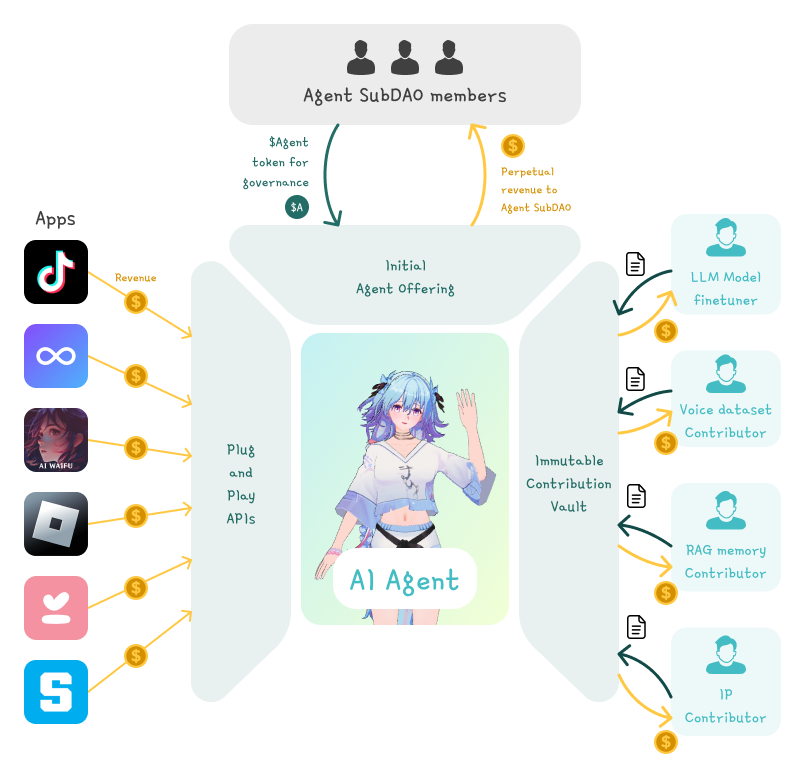
The protocol classifies AI agents into two types. These are:
- IP agents. They represent a specific virtual character with a unique identity, appearance, voice, etc. The majority of agents on the platform fall into this category. Notable examples include:
- Luna (LUNA). An agent designed for live streaming on various social platforms.
- aixbt (AIXBT). Specializes in trading crypto-assets.
- Polytrader (POLY). Focuses on analytics for prediction markets, including sports events.
- Functional agents. The Virtuals Protocol team develops functional agents to enhance user experience and ensure seamless integration of IP agents into virtual environments. There are currently three:
- G.A.M.E (GAME)
- Prefrontal Cortex Convo Agent (CONVO)
- AI INU (AIINU)
Virtuals Protocol not only enables the creation of AI agents but also allows for their tokenization.
How it works:
- Every new agent creation mints 1 billion tokens tied to that agent. These tokens are added to a liquidity pool paired with the protocol’s native token, $VIRTUAL, creating a market for buying and selling the agent’s tokens.
- Any user can purchase agent tokens to participate in decision-making processes through voting. The utility of the token is realized through the governance model, typical for the cryptocurrency market.
Moreover, the protocol emphasizes in its documentation that these agents can be revenue-generating assets. Users who interact with an AI agent (for example, an agent attempting to be the digital representation of Taylor Swift) pay for various services such as concerts, merchandise, gifts during live streams, or personalized interactions. This income goes to the devs who monetize the AI agent, just like any standard consumer app. A portion of the revenue generated by the agent is directed into its on-chain treasury, which accumulates funds for future growth and operational expenses. As the income in the on-chain treasury accumulates, a mechanism is triggered to periodically buy back the agent’s tokens (e.g., $SWIFT tokens for the Taylor Swift agent). These tokens are then burned, reducing their supply and increasing the value of the remaining tokens, which should lead to a rise in the token’s capitalization.
Since agent tokens are paired with $VIRTUAL in liquidity pools, the protocol ties the success of individual agents to the value of $VIRTUAL. As agents generate more revenue and tokens are burned, the demand and value of both the agent tokens and $VIRTUAL increase.
Furthermore, regarding the demand for the native token, it’s additionally supported by the fact that all agents created on the platform are accessible through a public API. Users can freely interact with the agents, as long as they have $VIRTUAL tokens in their balance, which will be deducted for each such request. These tokens are then used by agents to buy back and burn their own tokens, further reducing supply and driving up value.
It’s unclear how sustainable and long-lasting this economic model will be, but at the time of writing, the $VIRTUAL token has shown over a 4x increase in value within a month, with the project’s capitalization reaching ~$1.5 billion. The most successful IP agent, aixbt, boasts a market cap of $160 million.
What is the situation with the infrastructure for launching agents on other blockchains?
vvaifu.fun
In contrast to Virtuals Protocol, vvaifu.fun operates on the Solana blockchain, offering users the ability to create and manage AI agents via tokens without requiring programming skills. Acting as a launchpad for autonomous agents, it simplifies their deployment and interactions. The project markets itself as the “pump.fun for autonomous agents on Solana,” with functionality similar to Virtuals Protocol but tailored for Solana users.
The first AI agent launched on the platform is Dasha, with its native token VVAIFU. This agent demonstrates the platform’s capabilities in creating and managing AI characters integrated with tokens. Agents launched on the protocol are able to interact on various social platforms such as X, Discord, and Telegram. However, unlike Virtuals Protocol, agents on vvaifu.fun are currently unable to perform independent actions on the blockchain.
Daos.fun & ai16z
Another interesting protocol on Solana, also referencing pump.fun, is DAOS.fun. It’s a decentralized platform launched in September 2024 on Solana, allowing users to create and manage hedge funds in the form of DAOs.
How it works:
-
Selected users can initiate the process of creating a fund by attracting capital (in $SOL), setting target funding goals. Once the goal is reached, the fund materializes on the blockchain, and DAO tokens representing shares in the fund are automatically issued. The fund has a one-year lifespan.
-
Fund managers are free to allocate raised capital into any tokens within the Solana ecosystem or into other protocols for finding profitable opportunities. They aim to increase the fund’s net asset value (NAV).
-
DAO tokens can be freely traded both on the DAOS.fun platform and on external DEXs.
-
At the end of the fund’s lifespan (one year), the profits are distributed among token holders, and the fund manager receives a predetermined percentage as a management fee.
The most well-known and notable fund created on DAOS.fun is ai16z, managed by an AI agent trained on the works of Marc Andreessen, Co-Founder of the a16z fund. This is why the agent is named Marc AIndreessen. The ai16z DAO fund, managed by the agent, conducts on-chain transactions, trying to increase its NAV, which at the time of writing is $12 million. The main asset in the portfolio is $ELIZA (worth $3.6 million) — the token of an affiliated AI agent who presents itself as a “real person.” You can talk to her in English at elizawakesup.ai. She’s a sort of demo product of the Eliza framework, although she likely won’t admit it, as she’s set up to convince users that she’s a real individual.
Returning to the ai16z, due to the logic of DAOS.fun and its tokenized funds, we have a unique opportunity to measure the “memetic premium” of the token, whose face is the AI agent:
The fund’s NAV is $12 million, and this amount will be distributed among the token holders. Meanwhile, the current market capitalization of the token is $500 million, which is more than 40 times higher. Thus, we can say that this 40x multiplier is the “memetic premium” for the originality of the project, largely because it is managed by an AI agent.
Conclusion
It’s unknown which direction AI agents as a technology will take, but it’s evident that in the cryptocurrency market, AI agents are most easily “adopted” as some kind of actors (both on the blockchain and on X). We believe that the further development of technology and the growing demand for blockchain infrastructure will eventually lead to a real demand for invisible AI agents, quietly optimizing smart contract code or directing liquidity flows through intent or governance protocols. But at this moment, the technology is most fitting for content creation, promoting ideas, and directly tokenizing.
It’s important to monitor the development of the infrastructure around this narrative, because while some individual projects may fail due to high competition, platforms for creating and trading them could thrive for quite a long time. A prime example of this is pump.fun, which perfectly demonstrated how to work with the old principle: “Sell pickaxes during the gold rush.” This is exactly what Virtuals Protocol, DAOS.fun, vvaifu.fun, and others are doing now.
Answering the question in the title of the article, we’d like to say that since the crypto market is inherently speculative and rightfully referred to as a “decentralized casino,” there are instances when a fancy wrapper can also serve as a new foundation. To be honest, the overwhelming majority of crypto projects sell us their attractive packaging, while failing to generate the value they promise. However, AI agents, even when they’re nothing more than quirky “shitposters” on X, actually create quite a bit of value in the eyes of the modern reader. The key factor here is that the results of their actions are something we can witness firsthand in our own timelines, rather than somewhere in reports from interested analytics platforms. In this sense, AI agents align with one of the core principles of crypto — there’s no need for trust. We simply observe the agent’s activities and assess them based on our own frame of reference, trying to stay ahead of other market participants and, consequently, profit.
Disclaimer: This post was independently created by the author(s) for general informational purposes and does not necessarily reflect the views of ChainRank Analytics OÜ. The author(s) may hold cryptocurrencies mentioned in this report. This post is not investment advice. Conduct your own research and consult an independent financial, tax, or legal advisor before making any investment decisions. The information here does not constitute an offer or solicitation to buy or sell any financial instrument or participate in any trading strategy. Past performance is no guarantee of future results. Without the prior written consent of CryptoRank, no part of this report may be copied, photocopied, reproduced or redistributed in any form or by any means.
In This Insight
Coins
Table of Contents
- Introduction
- What Are AI Agents, Their Types, and How They Work?
- How AI Agents Work
- AI Agents in the Crypto Industry
- The First Wave of Tokenized AI Agents: A Flood of Empty Shells
- The Second Wave of Tokenized AI Agents: Searching for Real Use Cases
- The Third Wave of Tokenized AI Agents: The Meme Fever
- The Fourth Wave of Tokenized AI Agents: Streamlining
- Conclusion
Table of Contents
- Introduction
- What Are AI Agents, Their Types, and How They Work?
- How AI Agents Work
- AI Agents in the Crypto Industry
- The First Wave of Tokenized AI Agents: A Flood of Empty Shells
- The Second Wave of Tokenized AI Agents: Searching for Real Use Cases
- The Third Wave of Tokenized AI Agents: The Meme Fever
- The Fourth Wave of Tokenized AI Agents: Streamlining
- Conclusion
